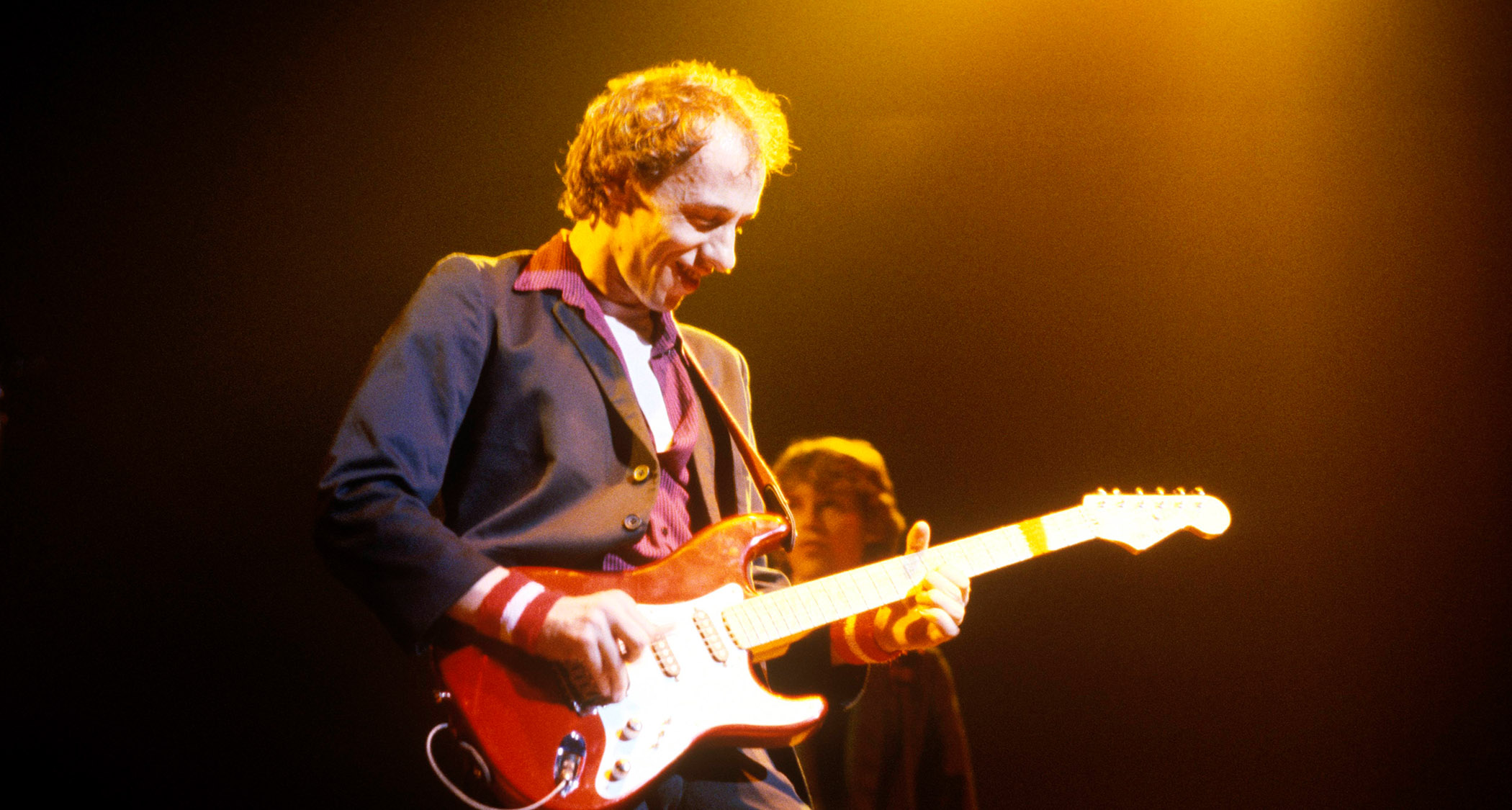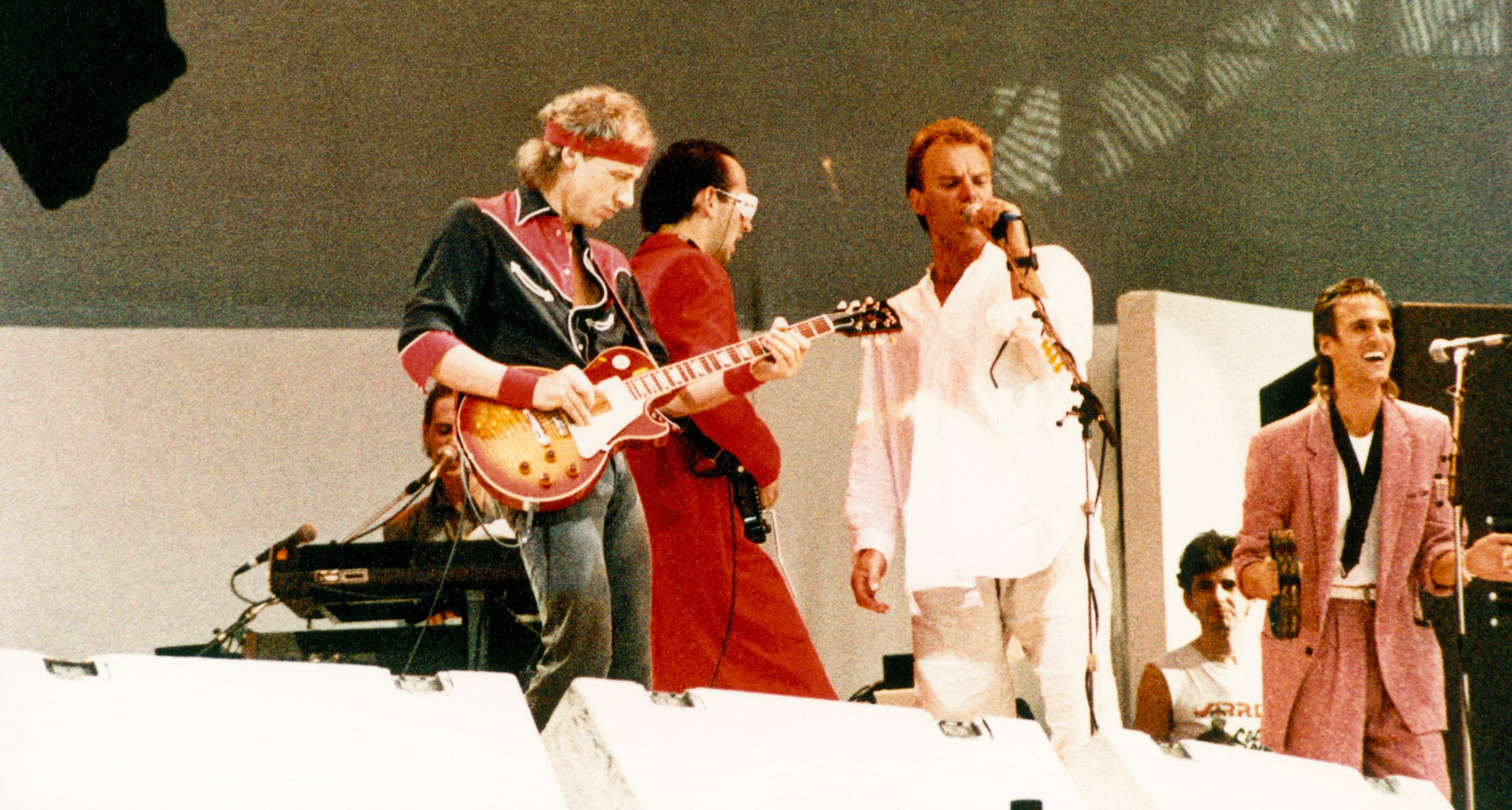“Playing four notes to the bar with your thumb... That changed everything for me, because that’s what I wanted to be able to do”: How Mark Knopfler grew up wanting to be Jimi Hendrix until he ditched the pick and went fingerstyle
Or how one lesson with a folk singer from the northeast of England (and a bunch of lost picks) changed the history of electric guitar

Few players have done more for fingerstyle electric guitar than Mark Knopfler. The Dire Straits guitarist has inspired generations of players to ditch the guitar pick – and it was only when did just that when he found his signature sound.
And what a sound. Even casual observers need only a bar of music to identify Knopfler’s playing. But Knopfler didn’t start out this way. Back in the day – i.e. when he was a teenager growing up in the northeast of England – he used a pick.
Speaking to BBC Radio 2’s Shaun Keaveny, on the latest episode of The Rock Show, available now on iPlayer, Knopfler unpacked his guitar journey, from being young kid getting his mind blown by the sounds he heard on Duane Eddy’s 1958 studio album, Have ‘Twangy’ Guitar Will Travel, to a teenager copping his heroes’ licks, to now, looking back on 40 years of Brothers In Arms.
Knopfler shares the stories behind the songs, and revealing how he story of how he transitioned to fingerstyle. It is a hugely relatable story for all guitar players; Knopfler kept on losing his picks.
Knopfler says he always knew what he wanted to do with his music. He was “slightly obsessive” about the guitar, and argues you need to be to in order to get anywhere with the instrument.
Above all, he wanted to write songs. “Some people fall in love with classical music and want to be a classical musician, or they want to play classical guitar or Spanish guitar,” he says. “I just want to play skiffle and rock ’n’ roll.”
Knopfler also knew who he wanted to sound like, too. The Gretsch guitar-toting rock ’n’ roll pioneer Duane Eddy was just one in a succession of guitar heroes.
Want all the hottest music and gear news, reviews, deals, features and more, direct to your inbox? Sign up here.
“I just wanted to be BB King or Jimi Hendrix. I loved them both,” he says. “I was playing with a pick then all the time, on electric. I was learning to fingerpick, but that was all I wanted to do. I’d be playing Voodoo Child or I’d be playing Purple Haze, or Hey Joe.”

Somewhere along the way, Knopfler would find less use for a pick. He would lose them and then not bother to find another.
“I was playing less and less with a pick because I’m inherently lazy, and I would lose [them]. I would have a pick in my pocket all the time,” he says. “In fact, I’m automatically feeling for one now, but I happen to know there’s not one in my pocket right now. But I used to do both.”
Knopfler might have wanted to be the next Hendrix, to take whatever he could from that style and apply it to his own songwriting, but playing fingerstyle gave him an epiphany. There was a difference in tone, and this was what he was looking for all along.
“I mean, the attack of your fingers is just gonna be less, is more rounded, softer, which maybe is a characteristic [of mine]. It’s difficult to tell, really,” he says. “But the picking thing, it’s essentially the percussive thing is what happens. So if you’re playing, say, the Money For Nothing lick, the fingers will be going ‘chicka-dook, chicka-dook, chicka-dook…’ That’s what it would sound like.
“hicka-boom! It’s not exactly high art, is it? Chicka-boom is down-home playing and that’s really a basic clawhammer, Travis-style of guitar playing.
“It was a folk singer up in Northumberland, Joe Davidson, I remember, he taught me how to do that. That’s playing four notes to the bar with your thumb, and that changed everything for me, because that’s what I wanted to be able to do, and so it was learning to ride a bike.”
This approach is what makes Knopfler’s playing as good as a fingerprint. It is what gives his Money For Nothing riff its character. That track become Dire Straits’ biggest commercial single, an anthem emblematic of the dawn of MTV and a new media landscape for popular music to negotiate.
But Knopfler says it’s not a riff that’s taken from rock ’n’ roll – and it is certainly not like anything his peers were doing in 1985. If you’re looking for its musical lineage, you’ll find it is rooted in country dancing. “It’s a hoedown lick,” says. Knopfler. “That’s what it is.”
In this Rock Show interview, Knopfler talks about the success of Brothers In Arms being owed to a number of coincidences. They released it on the back of a string of hit singles in the US.
Their label had just invented the CD player and used the album to demo the technology. The video was a hit on MTV, particularly across Europe. But then you could look at the evolution of Knopfler’s guitar style in a similar light.
It, too, was the product of circumstances. Knopfler was a southpaw forced to play right-handed (a tale as old as time). Losing his picks, spending more time with his fingers, having his one and only formal lesson with Davidson – reportedly the boyfriend of a friend’s older sisters – and learning just enough to find his style.
Sometimes circumstances and fate can open the door. Very occasionally they present an opportunity to make musical history in real-time, like when Dire Straits were tracking Brothers In Arms in Montserrat, Sting just happened to be on the beach, and there was a track titled Money For Nothing that needed Sting's help...
Jonathan Horsley has been writing about guitars and guitar culture since 2005, playing them since 1990, and regularly contributes to MusicRadar, Total Guitar and Guitar World. He uses Jazz III nylon picks, 10s during the week, 9s at the weekend, and shamefully still struggles with rhythm figure one of Van Halen’s Panama.
You must confirm your public display name before commenting
Please logout and then login again, you will then be prompted to enter your display name.





